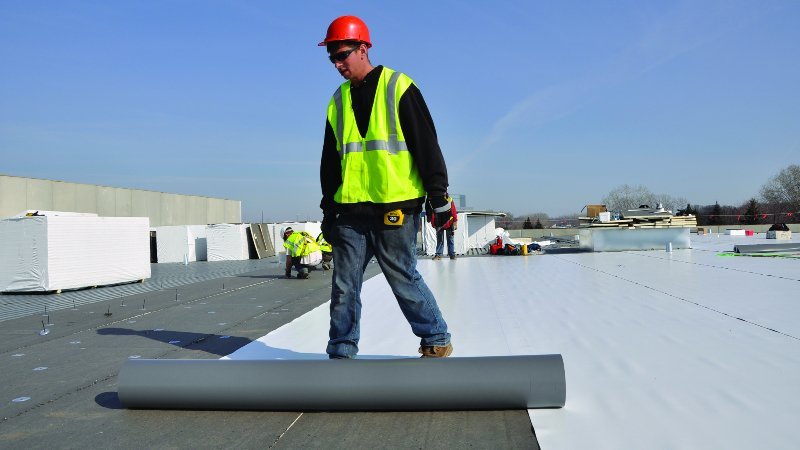
Roof Treatment Method
Roof treatment is a mandatory job in roof waterproofing to protect the roof from leakage, seepage, and heat. There are various methods and unique techniques approved by many consultants, developers, and others. We will see these methods here.
1) LIME SURKI Roof Treatment: An Old method, which is now obsolete.
Some of its advantages are:
– Very good waterproofing property
– Very good heat insulation property
– Durable
2) Soil Pot System: This system is very effective to replace the above system.
Some of its advantages are:
– Very good waterproofing property
– Very good heat insulation property
– Durable
Soil pots are immersed in AQUACRETE® for 2-3 hours. Then those are placed on AQUACRETE® admixed R.C.C. roof as the conical shape will be upward. The gaps of pots are covered during screed concreting; screed concrete must be prepared with SYLOCON® and should be laid in panels. Panel joints are filled up with AQUACRETE® FLEXEEL, a highly elastomeric waterproof and weatherproof sealant.
Some of its limitations are:
– Collecting soil pots is important; soil pots are fragile items
– Care should be taken to handle soil pots to avoid damage
3) Cement and Fillers with Polymer Coating: Cementitious slurry is prepared, which is applied on R.C.C. roof slab and is covered by a layer of screed concrete.
Some of its advantages are:
– Ease of working
– Economical
Some of its limitations are:
– When screed concrete is cracked, underneath treatment is also slowly damaged and holds water in concrete pockets.
– During the hot season entrapped water is evaporated, which causes further development of cracks in screed concrete, and underneath treatment is damaged due to this random crack development in screed concrete.
– This system is not found durable and repairing job is the only solution of this problem which is a just temporary solution.
4) Scratch Resistant White Acrylic Coating on Top of Screed Concrete:
Some of its advantages are:
– Reflects heat
– Good waterproofing membrane
– Durable
Some of its limitations are:
– Reflects heat till white color is not affected by dirt or dust
– A warranty period is provided by the manufacturer or applicator which means it has certain longevity Very costly
– Skilled workmanship is required
5) Any Type of Membrane Waterproofing:
Some are covered by screed concrete and some are exposed to the weather.
Some of its advantages are:
– Very good roof waterproofing
Some of its limitations are:
– If proper workmanship and care is not taken, a joint failure problem is found, which cause water leakage
– Costly
– A warranty period is provided by the manufacturer or applicator, which means it has a certain longevity
6) Mosaic Finish Roof: Waterproof by nature.
Some of its advantages are:
– Ease of laying and finishing a good aesthetic top
Some of its limitations are:
– Cracks are developed on top surfaces through which water percolation takes place. Based on this experience concrete is laid in segments and joints between segments are separated by glass strip / PVC strip. But both the strips could not show any satisfactory result. Glass strips are broken due to thermal expansion and contraction. Also, there is no bonding between glass, PVC, and concrete. Water percolation takes place through the gap, this is a result of de-bonding between concrete and glass / PVC.
7) Bricks laid on Mother R.C.C. Slab for Insulation: Here bricks are laid as an insulting component on mother R.C.C. slab. In most cases, as mother R.C.C. slab is coated with waterproof coating. Bricks are covered with screed concrete or tiles are laid on top of screed concrete.
Some of its advantages are:
– Good thermal insulation property
– Due to the application of the waterproof coating on the mother slab, the waterproofing property lasts till the top surface does not allow water infiltration.
Some of its limitations are:
– Increases maximum dead load on roof slab.
– Once the top surface allows water infiltration, water is entrapped inside pockets and bricks are wet. As a result, the dead load is further increased.
– Water percolation starts from bricks to underneath waterproof coating. Waterproof cementitious coating starts swelling and slowly damage is focausinguses leakage.
– Further, entrapped water evaporates forming gas, which generates upward pressure and liberates creating new cracks or gaps on top.
8) A Unique Technique of Roof Treatment: Mother R.C.C. slab is made with AQUACRETE®, which is a liquid Nano waterproofing compound, when the reaction takes place between calcium silicates, this creates a water repellent hydrophobic concrete. This helps in self-curing too. So, no cracks are developed in concrete. Once the mother slab concrete is waterproof, there is no chance of water percolation through the AQUACRETE® admixed concrete.
The top of the slab is covered to drain out water; screed concrete is laid in panels. SYLOCON® is added in screed concrete to avoid cracks in screed concrete and provide waterproof protection on the roof. SYLOCON® also helps screed concrete in curing.
Panel joints are filled up with AQUACRETE® FLEXEEL, a highly elastomeric waterproof and weatherproof sealant.
Some of its advantages are:
– A monolithic waterproof roof is made.
– No additional waterproof coating is required.
– Screed concrete is not cracked due to this specification.
Some of its limitations are:
– Proper mixing of AQUACRETE® and SYLOCON® with concrete is very important.
9) Roof Garden: This is a costly method of roof treatment, which is not only attractive and environmentally friendly, but it has a very good insulation property.
Some of its limitations are:
– If waterproofing is not perfect and the expansion joint (for a large area) is not treated properly with the right product and concept, there is a common chance of failure. This is proven in many projects.
